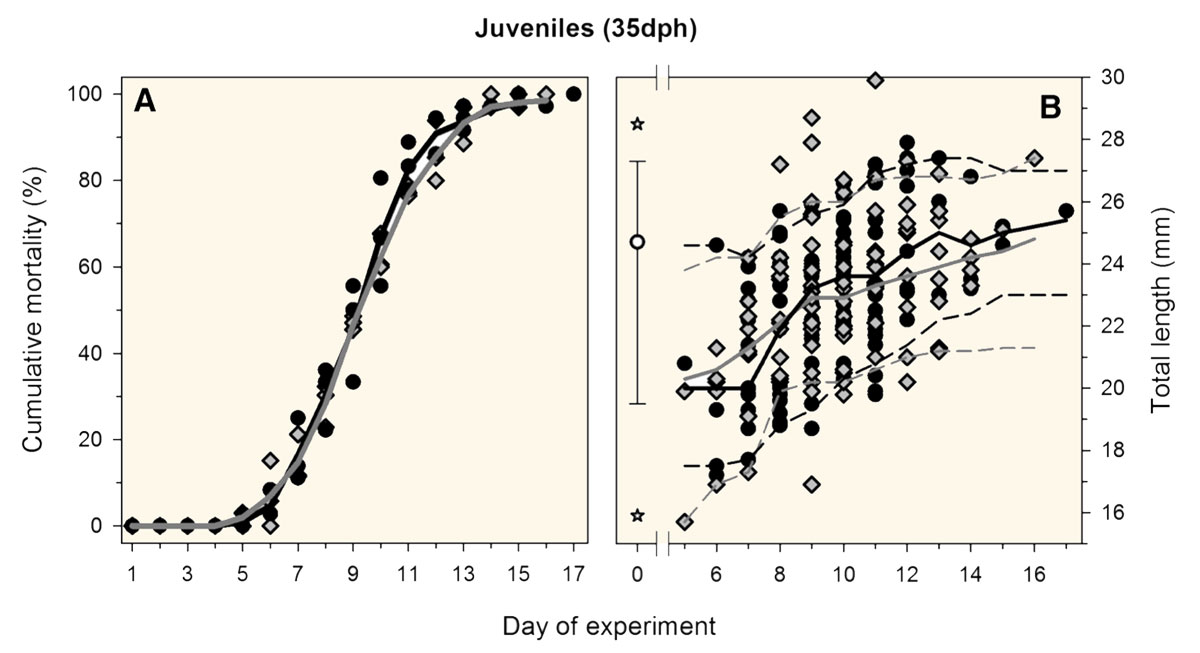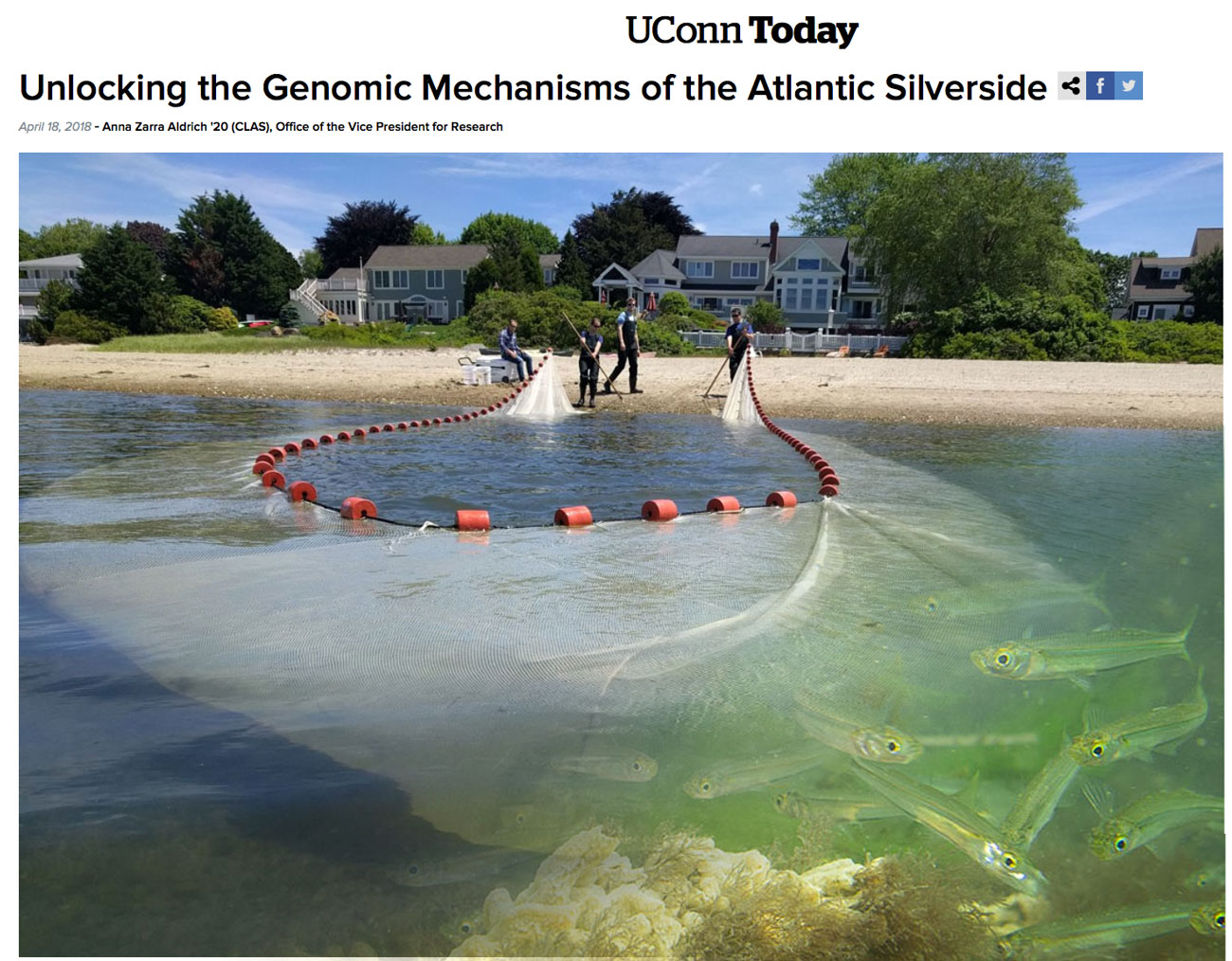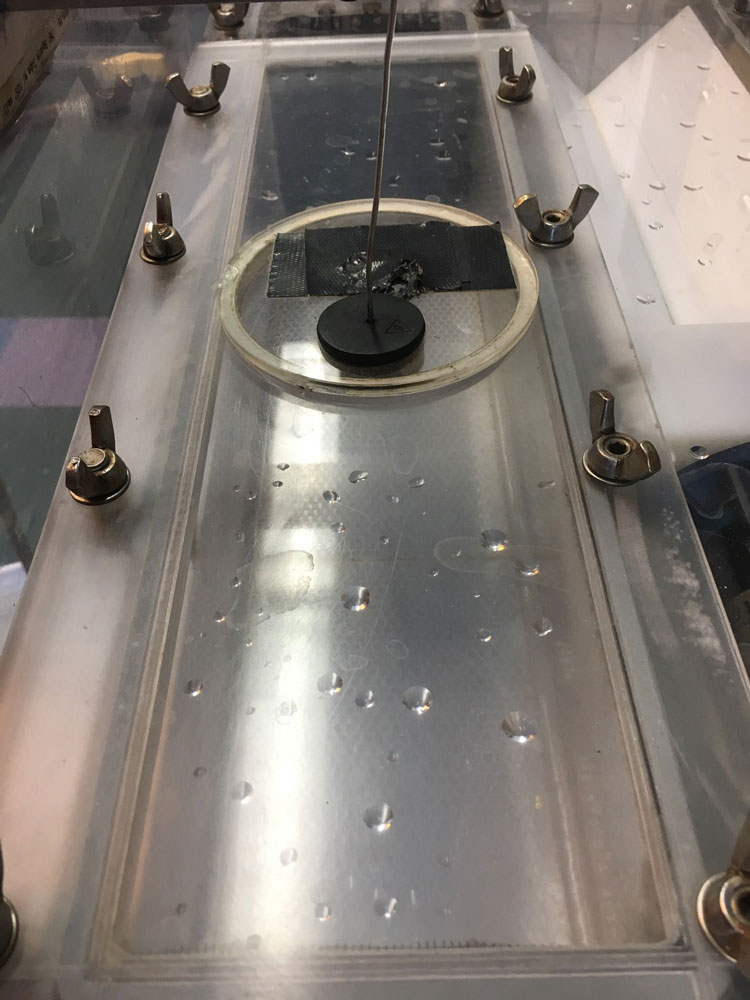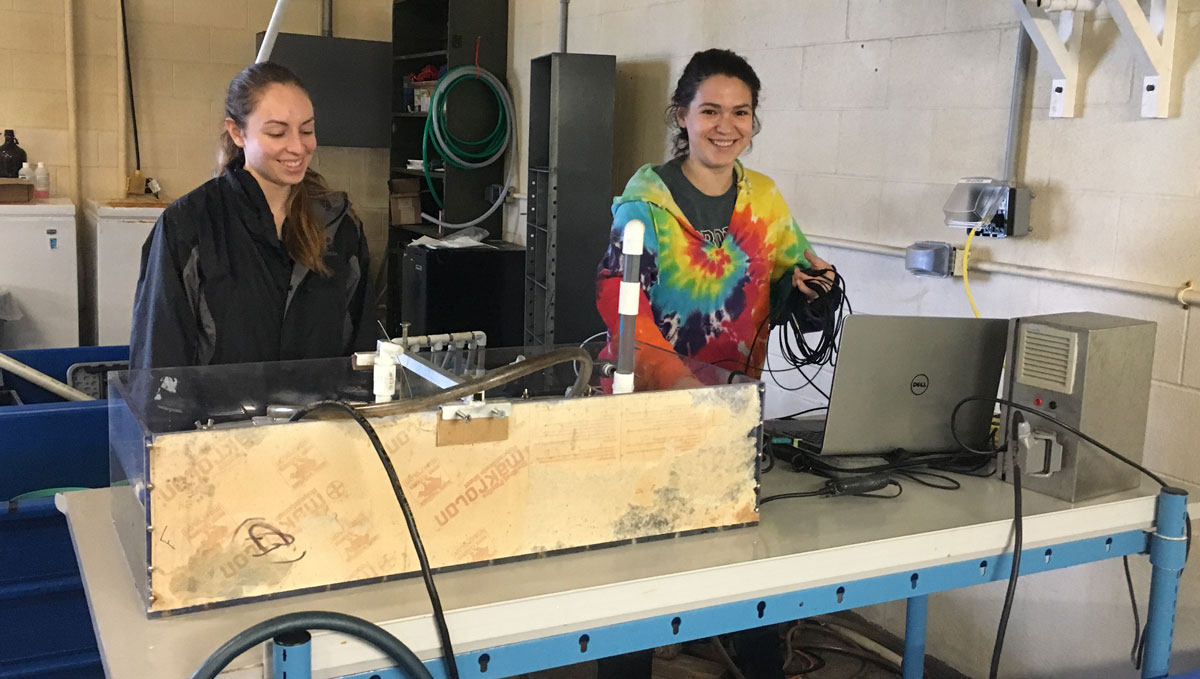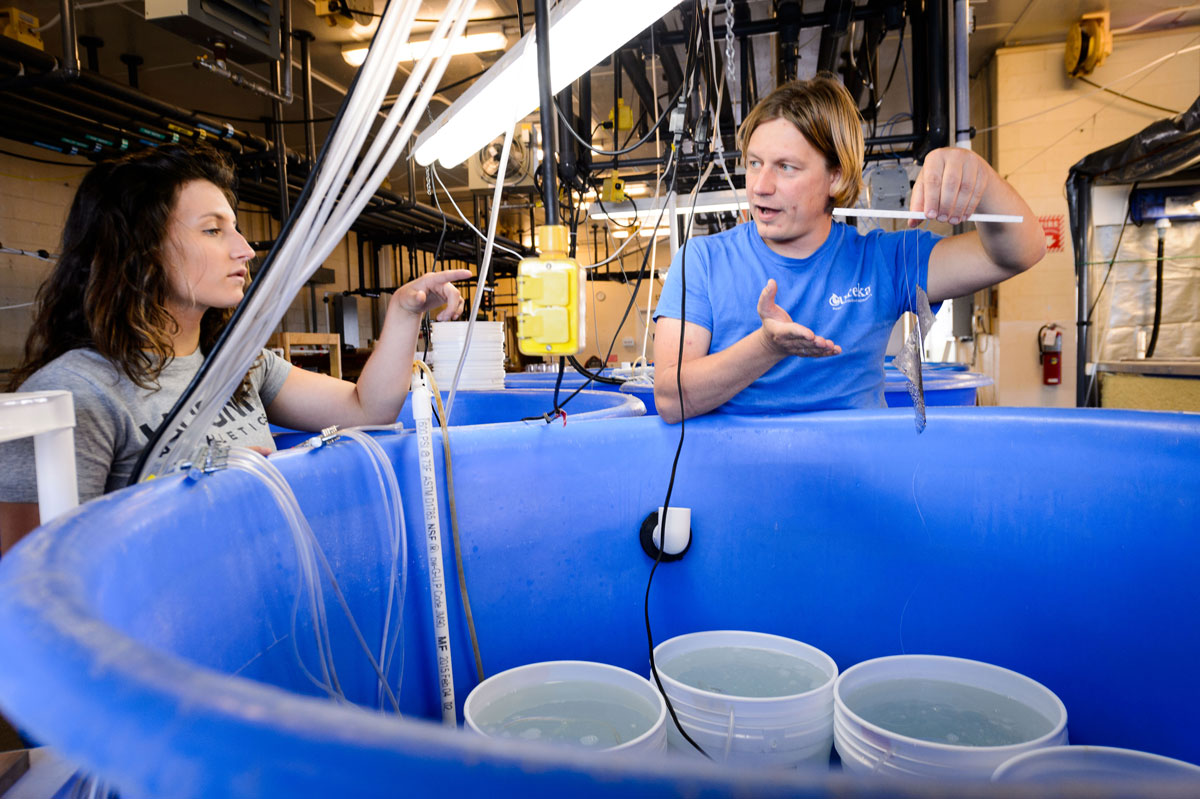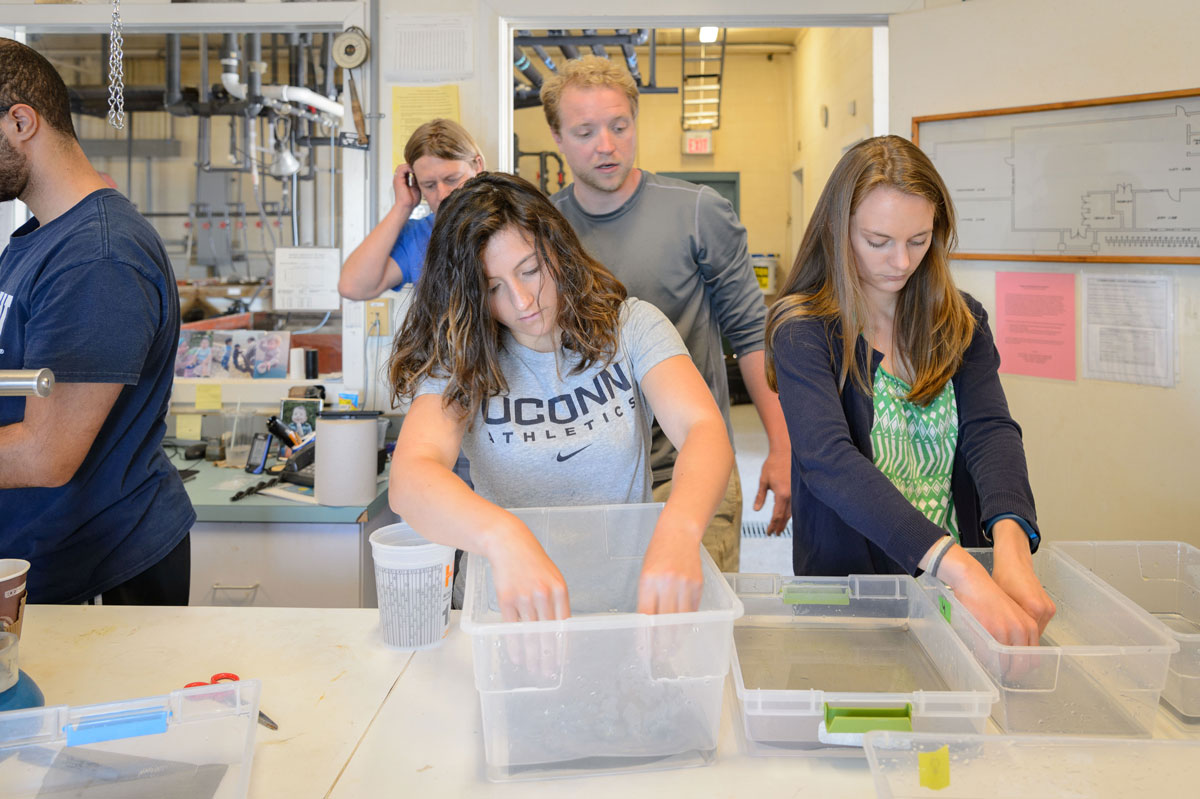Click on the link or the image blow to access the article in UConn Today …
Month: April 2018
[Lab news] The old swim flume coming back to life
4 April 2018. Today, Adelle Molina and Teresa Schwemmer from the Nye Lab at Stony Brook University visited us with a bunch of respirometry equipment in tow. We were trying to find out how to measure critical swimming speeds and oxygen consumption on individual silverside juveniles. This information, along with other individual traits such as growth, lipid content, and vertebral number will later be used in our new NSF-project examining the genetic underpinnings of local adaptation in this species.
One crucial piece of equipment to do this work is a swimming chamber, also called swim flume. The one we will use is almost 20 years old and has already been used for silverside work more than a decade ago. After a long odyssey through several labs and institutions in the US, we finally got hold of it again, gave it some serious TLC and now hope to resurrect it. Thanks to our pro’s from Stony Brook, the first tests were promising today! Thank you Adelle and Teresa.
[New publication] No CO2 effects on silverside starvation
- Baumann, H., Parks, E.M.*, and Murray, C.S.* (2018)
Starvation rates in larval and juvenile Atlantic silversides (Menidia menidia) are unaffected by high CO2 conditions.
Marine Biology 165:75-83
